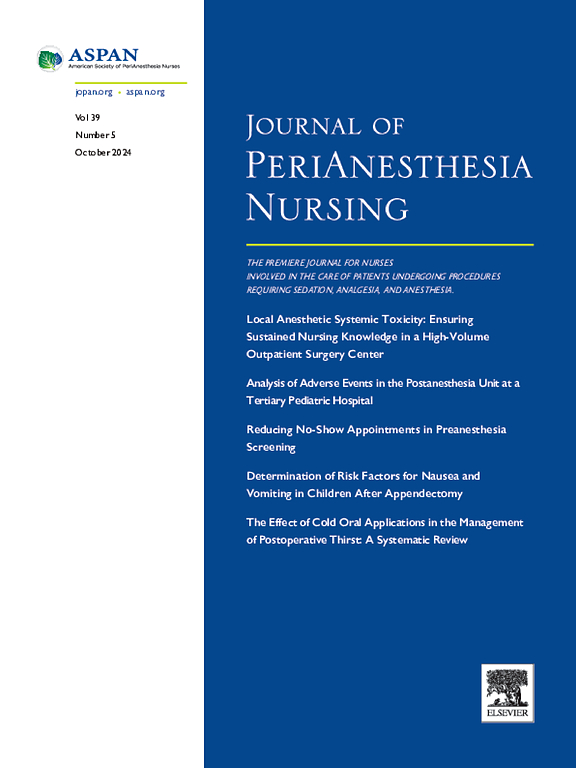A Comprehensive Intervention Program for Postoperative Delirium Prevention in Elderly Patients Undergoing Cardiac Surgery
IF 1.6
4区 医学
Q2 NURSING
引用次数: 0
Abstract
Purpose
To explore the application effect of a comprehensive intervention program for postoperative delirium (POD) prevention.
Design
Descriptive and comparative study.
Methods
This study included 82 elderly patients who underwent cardiac surgery as the control group to receive routine perioperative care. Seventy seven elderly patients who underwent cardiac surgery were selected as the observation group and received a comprehensive intervention program for POD prevention. This study further compared the length of stay in the hospital, nutritional status, pain score, and sleep quality between the two groups after intervention.
Findings
The postoperative length of stay in the hospital of the observation group was shorter than that of the control group (12.60 ± 2.97 vs 17.30 ± 7.10), and the incidence of POD was lower than that of the latter group (24.68% vs 47.56%, X2 = 8.976, P = .003). The pain scores of the observation group were lower than those of the control group (F = 195.381, P < .001). There was significant difference that the sleep quality score of the observation group was higher than that of the control group (F = 219.20, P < .001). The levels of albumin and hemoglobin in the observation group were higher than those in the control group (54.38 ± 5.87 vs 38.40 ± 3.11; 124.64 ± 13.18 vs 109.00 ± 10.20). The observation group had shorter mechanical ventilation duration, intensive care unit stay, and lower total hospital expenses compared with the control group (P < .05).
Conclusions
The comprehensive intervention program for POD prevention based on evidence-based medicine has a positive effect. In addition, it can also improve patients' pain, sleep quality, and nutritional status.
预防心脏手术老年患者术后谵妄的综合干预计划。
目的:探讨术后谵妄(POD)预防综合干预计划的应用效果:方法:描述性对比研究:本研究将 82 例接受心脏手术的老年患者作为对照组,接受常规围手术期护理。选取 77 名接受心脏手术的老年患者作为观察组,接受预防 POD 的综合干预项目。该研究进一步比较了两组患者干预后的住院时间、营养状况、疼痛评分和睡眠质量:观察组的术后住院时间比对照组短(12.60 ± 2.97 vs 17.30 ± 7.10),POD 发生率比对照组低(24.68% vs 47.56%,X2 = 8.976,P = .003)。观察组的疼痛评分低于对照组(F = 195.381,P 结论:观察组的疼痛评分低于对照组,P = 0.003):基于循证医学的 POD 预防综合干预方案具有积极的效果。此外,它还能改善患者的疼痛、睡眠质量和营养状况。
本文章由计算机程序翻译,如有差异,请以英文原文为准。
求助全文
约1分钟内获得全文
求助全文
来源期刊

Journal of Perianesthesia Nursing
NURSING-
CiteScore
2.20
自引率
17.60%
发文量
279
审稿时长
90 days
期刊介绍:
The Journal of PeriAnesthesia Nursing provides original, peer-reviewed research for a primary audience that includes nurses in perianesthesia settings, including ambulatory surgery, preadmission testing, postanesthesia care (Phases I and II), extended observation, and pain management. The Journal provides a forum for sharing professional knowledge and experience relating to management, ethics, legislation, research, and other aspects of perianesthesia nursing.
 求助内容:
求助内容: 应助结果提醒方式:
应助结果提醒方式:


